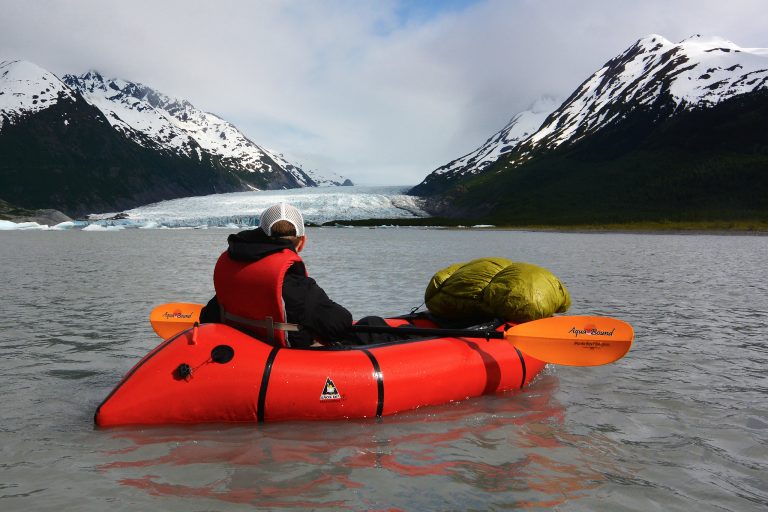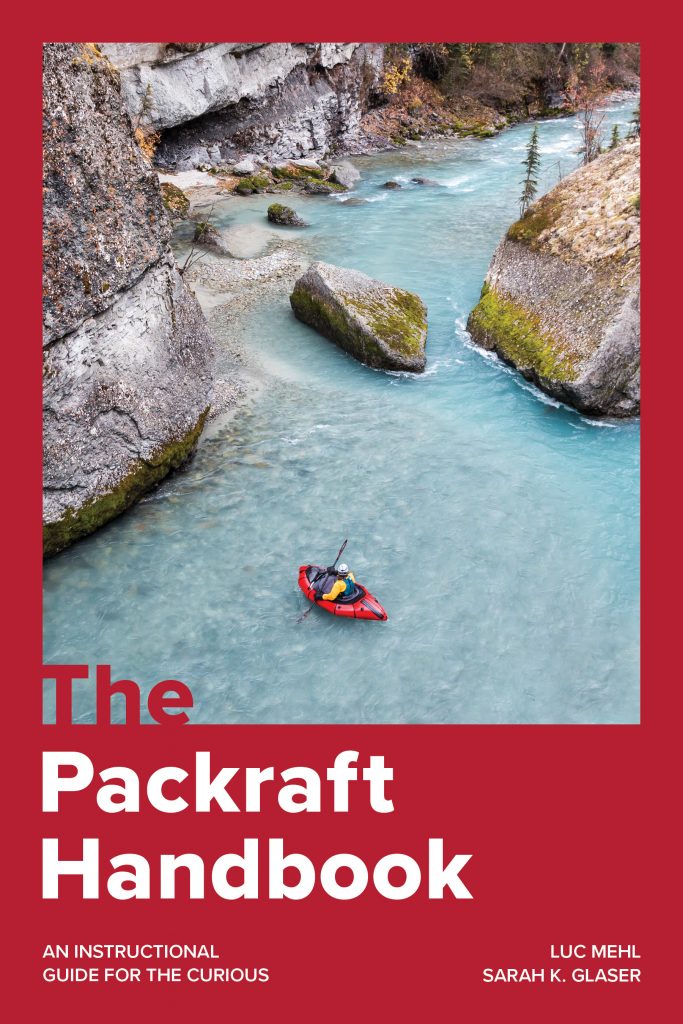Packrafting on Spencer Lake. Chugach National Forest, Alaska. Photo courtesy Paxson Woelber.
When Lt. Henry Allen and his companions journeyed from Cordova to the Brooks Range in 1885, locals showed them how to carry and stretch animal skins over willow branches to form packable rafts. More recently, Alaskans led the way in “packrafting.” Originally, we carried lightweight inflatables to cross and float rivers on wilderness trips. But now packrafters can be found floating on ponds, carrying bikes, running Class V whitewater, or descending the Susitna River to tidewater following a climb up Denali. Not only are these boats light and easy to pack and paddle, but they are colorful and fun. They bring boaters closer to their friends, family, and places they love and care about.
Luc Mehl, a leading proponent of safety and inclusiveness for these clever craft, has written The Packraft Handbook, a definitive packrafting guide illustrated by Sarah K. Glaser. It’s difficult to imagine a better pair than this author and illustrator. Both were raised in Alaska—prime packraft habitat—with wilderness literally out their backdoors. Each epitomizes the multisport, super-safe, modern adventurer who is self-propelled and self-reliant, good-natured, with broad smiles and welcoming dispositions that come across clearly in this delightful and informative book.
With thousands of miles of adventurous journeys all over Alaska, Mehl has the knowledge, community concern, and analytic background to write this needed handbook. Motivated by the death of a friend, Mehl decided to make it his life’s work to educate and inform others on how to be safe and have fun. The Packraft Handbook, with its emphasis on a culture of safety and vigilance informed by a decade of experience during the most rapid growth of packrafting development, marks the sport’s entry into a golden age.
It’s the book we’ve all been waiting for.



Comments are closed.